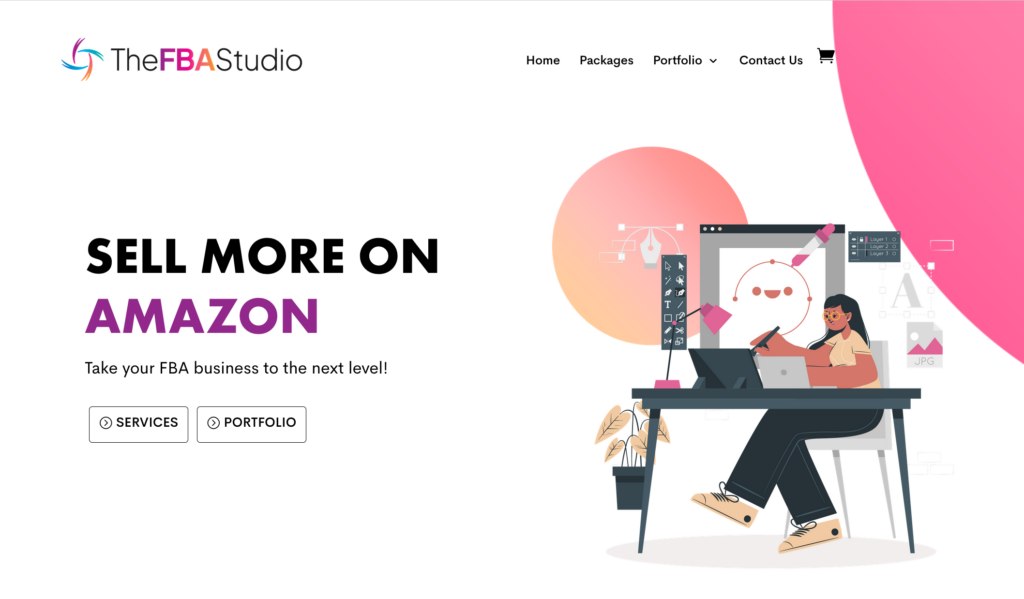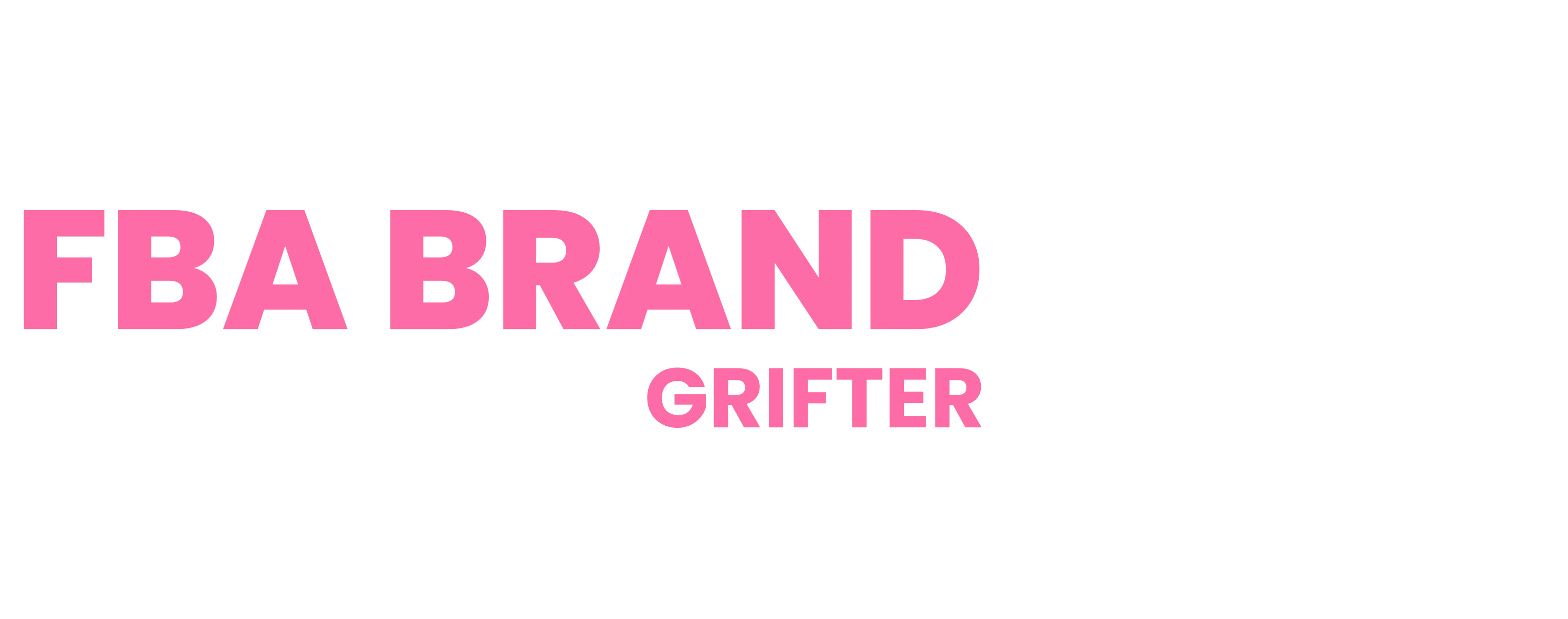Darren Campbell’s FBA Brand Builder program promises life-changing results for aspiring Amazon sellers, but if you’re considering signing up, there’s a lot you should know before jumping in. While the initial cost of the program sits at a hefty £6,500, that’s really just the start of what you’ll end up investing. Throughout the program, clients are encouraged—and sometimes pressured—to buy additional services from FBA Studio, an in-house agency that Campbell seems to own. And these extras aren’t cheap.
For clients who sign up thinking they’re getting an all-in-one package, the reality hits hard. Nowhere in the pre-call, initial consultation, or even the contract are these extra costs laid out. Once you’ve signed the contract and forked over that initial fee, you’re suddenly faced with a tough choice: keep going down an increasingly expensive path, or walk away and forfeit the £6,500. With a no-refund policy looming over you, many clients feel like they’re stuck.

1. What Are These Additional Costs? A Breakdown of FBA Studio Packages
FBA Brand Builder clients quickly discover that to actually launch a professional-looking Amazon product, they’ll need more than just Campbell’s course. Enter FBA Studio, which sells several pricey add-on packages for branding, listing optimization, and more:
- Zero to Hero Package: $2,994 for branding, packaging design, listing copywriting, 3D renders, and listing images.
- The Ultimate Launch Package: $2,600, ideal if you’re adding a product to an existing brand.
- The Perfect Listing Package: $2,030, offering listing copy, 3D images, and photography.
These services are presented as essential, but who actually does the work? Campbell has a history of outsourcing to affordable freelancers on platforms like Fiverr, raising questions about where this money is really going. If you’re paying premium prices, are you getting premium work, or just an outsourced, marked-up product?
2. Who’s Doing the Work? Outsourcing Concerns and Questionable Expertise
Despite FBA Studio’s high prices, the quality and origins of the work are anything but transparent. Campbell has often recommended low-cost freelancers, so it’s easy to assume that FBA Studio might rely on similar resources. Clients have also noted that Campbell’s in-house team lacks marketing experience, making it hard to trust that the people handling their listings have the expertise needed for success.
3. Is FBA Studio a Money Funnel Back to Campbell?
There’s something unsettling about how FBA Studio operates. In Darren’s program, creating a professional Amazon listing is critical, and clients are told they need high-quality product images, optimized SEO copy, and an attractive brand presentation. Yet, when it comes to sourcing these essentials, where do they end up? Many are pushed toward FBA Studio—the very company Darren now claims to have brought "in-house" with his team.
In one recent post, Darren writes:
So, what does this really mean? Clients, who’ve already forked out thousands in course fees, are now encouraged to pay even more to Darren’s own FBA Studio for listing services. This setup means clients are essentially paying him twice—once for the initial course, and again for these essential listing services that could be outsourced elsewhere for less.

Just to get a sense of these costs, FBA Studio’s packages range from $2,030 for basic listings to nearly $3,000 for more comprehensive "Zero to Hero" packages that cover branding, packaging design, listing copywriting, product photography, and more. These are necessary items for any successful Amazon listing, but here they come with a steep price tag, conveniently funneled right back into Darren's own pocket.
And here’s the kicker: there’s absolutely no mention of these additional costs in the contract or during initial consultations. So, once clients sign up, they’re locked in, facing a stark reality: either continue pouring money into the program they’re now deeply invested in, or walk away and forfeit the £6,500 (or more) they’ve already paid, thanks to the no-refund policy.
It’s a financial trap that many only recognize once they’re too far down the line to turn back.
4. Where’s the Transparency? Hidden Costs and the “No Refund” Trap
One of the most frustrating aspects for former clients is the way costs are presented—rather, not presented. During the initial discovery call, and even within the contract, these additional expenses are barely mentioned. It’s only after clients have signed up and committed that they realize they’ll need to pay for a host of essential add-ons if they want to move forward.
Let’s break down some of these extra costs. Beyond the hefty £6,500 program fee, clients soon find themselves shelling out for services like:
- Empire Builder Software – £699 for the full year (or month-to-month, which adds up quickly).
- Trademark Registration – Roughly £600 to legally protect the brand.
- Branding and Packaging Design – £400 for creating logos, packaging, and insert cards.
- Listing Optimization Package – £1,350 for professional product photos, SEO copywriting, keyword research, and A+ content.
And, of course, there’s FBA Studio—now rebranded under Darren’s “in-house” umbrella—which charges between $2,000 and $3,000 for the various listing services required to actually make a product appealing on Amazon. These additional costs, often totaling £10,000 or more, aren’t disclosed upfront, leaving clients blindsided by the total financial commitment required. In fact, depending on the type of product clients are pushed to launch, some report spending £25,000 to £30,000 or more by the time all is said and done.
For clients, this lack of transparency feels like a classic bait-and-switch. They believed they were paying for a “complete program” that would teach them how to build a brand on Amazon, only to discover it’s a piecemeal journey with an ever-expanding price tag. And with a strict no-refund policy in place, they face a difficult choice: either walk away and lose the thousands they’ve already invested or keep pouring money into the program, hoping that one day they might finally see a return.

5. The Social Media “Success” Push: Revenue vs. Actual Profits
One final point to consider is the focus on revenue-based “success stories.” Campbell loves to celebrate clients who hit $10K in sales, but there’s little talk about actual profit. After paying for Amazon fees, inventory, ads, and those pricey FBA Studio add-ons, many clients report minimal profit—if they’re making any at all. Still, Campbell encourages these clients to post about their “success” on social media, reinforcing his brand’s image but doing little to help them build actual wealth.
It’s clear that Campbell’s program is more about building a revenue narrative than showing clients how to achieve real profitability.
Conclusion: Is the FBA Brand Builder Worth the Real Cost?
The FBA Brand Builder program markets itself as a one-stop solution, but clients quickly learn that the initial £6,500 is only the beginning. With add-ons from FBA Studio that cost thousands, and a heavy emphasis on social media “success” over genuine profitability, many clients feel blindsided by the program’s true financial demands. For anyone considering signing up, it’s crucial to go in with eyes wide open—and to ask for a clear breakdown of costs before making a commitment.
If you’re a former client of this program and would like to share your story, please get in touch. We’ll keep your details anonymous as we work to shed light on the realities behind this Amazon FBA training program.

